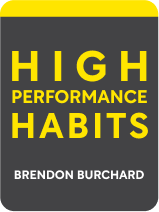

This article is an excerpt from the Shortform book guide to "High Performance Habits" by Brendon Burchard. Shortform has the world's best summaries and analyses of books you should be reading.
Like this article? Sign up for a free trial here .
What are the three characteristics of confidence? Do people who have these characteristics tend to perform better than those who don’t?
According to Brendon Burchard, confidence is one of the must-have prerequisites for high performance. In his book High Performance Habits, he describes three characteristics of confidence and discusses their role in performance.
Keep reading to learn about Brendon Burchard’s characteristics of confidence: competence, congruence, and connection.
Confidence and High Performance
Even when under immense pressure, high performers know how to generate the confidence to push ahead. Confidence isn’t something you’re born with. It requires patience, hard work, and persistence.
Characteristics of Confidence
According to Brendon Burchard, there are three characteristics of confidence: competence, congruence, and connection.
Competence
High performers are confident in their abilities. They use their knowledge and skills to feed their confidence. To develop competence, take the time to master important skills. The more you know about a topic, the more confident you can be in your abilities. For example, if you’re a baseball player, and you’ve spent a lot of time practicing and perfecting your swing, you’re going to be more confident when you get to the plate.
Congruence
High performers are confident in who they are. They have a clear self-image and act in accordance with their values. To develop congruence, have a strong sense of identity, define your values, and set your intentions. Once you know those things, you won’t second guess any choices that align with them. For example, if you know you’re passionate about saving the environment, you’ll be confident in your efforts to become more eco-friendly.
Connection
High performers use their relationships to build their competence and congruence. They use interactions with their family, friends, and colleagues to learn more about themselves and their work. To develop connection, engage with the people around you and seek out opportunities for education and development. For example, if you’re a manager, taking the time to understand the dreams, fears, and concerns of your employees will give you more confidence to enact positive change.

———End of Preview———
Like what you just read? Read the rest of the world's best book summary and analysis of Brendon Burchard's "High Performance Habits" at Shortform .
Here's what you'll find in our full High Performance Habits summary :
- The 6 habits that high performers have
- How being a high performer is about more than one big achievement
- The 3 traps that can foil you, even if you're a high performer






